How Much Power (kWh) Does a Garage Door Opener Use?
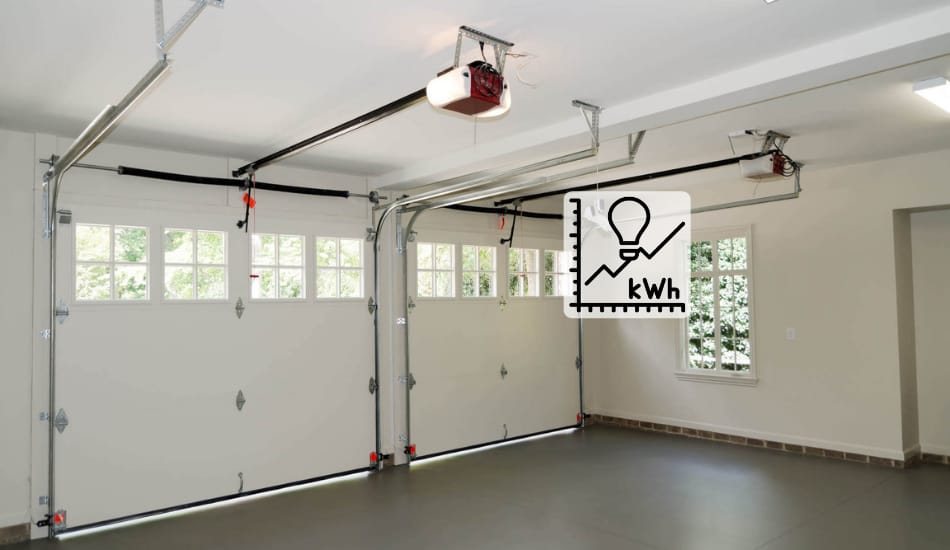
A garage door opener is a device that is powered by an electrical motor. Its main purpose is to open and close a garage door that is controlled by a switch on the wall or by the remote control. This device is very popular in many households because you can open or close your garage doors without leaving the vehicle. However, as garage doors use an electric motor to operate, you might wonder how much electricity they actually consume?
Also, when we use a garage door opener, it takes about 10 seconds for them to open or close doors. In this article, we’ll explain everything you must know about garage door power consumption and how much it will cost you. So, let’s start!
How Much Power Does a Garage Door Opener Use? Garage door openers, on average, use from 350 to 600 Watts. However, they consume between ¼ and ½ horsepower (HP) per one cycle (open/close), which is equal to 0.001 kWh. Therefore, for every use, we’ll spend around 0.011 cents (average cost of electricity in the US is around 11 cents per 1 kWh).
While you don’t need to worry about the garage door opener’s electricity (kWh) consumption, it’s good to know how much energy they consume. We can say practically nothing! When it comes to usage, electric garage door openers are used only a few minutes per day, and that’s why they don’t consume much power.
However, you must know that most garage door openers also consume power during standby mode (this is also known as phantom load). During standby mode, they can consume 3 to 5 times more energy compared to when they are working for those few minutes per day.
Here you can see the most popular models of garage doors and their annual power consumption:
| Garage Door Opener Model | Horsepower [HP] | Power [Watts] | Annual Cost [$] |
|---|---|---|---|
| 1. LiftMaster 8550 | 0.5 hp | 370 W | $4.05 |
| 2. Genie StealthDrive 7115-TKV | 1.25 hp | 930 W | $10.18 |
| 3. Skylink Atoms ATR-1511C | 0.5 hp | 370 W | $4.05 |
| 4. Chamberlain 1.25-HP | 1.25 hp | 930 W | $10.18 |
| 5. Sommer Direct Drive | 0.75 hp | 560 W | $6.13 |
What is also important when it comes to the power consumption of garage door openers is the type of motor that is installed. Two types of motors can be used: DC motors and AC motors. As many of you know, the DC motor provides better speed control and consumes less power.
By using a DC motor, you can easily adjust the gate movement more precisely and smoothly while the doors are less noisy. This can be a very important thing to consider when it comes to private homes.
Keep an Eye on Phantom Loads!

Yes, there is something that is called phantom loads (also known as vampire load)! If you don’t know what it is, don’t worry. A phantom load is electricity (power) that some device or appliance consumes when it is in standby mode or when it’s turned off. Although this can often be very low power consumption, it can add up over months and years.
How do These Phantom Loads Work?
Every device that uses remote control has an active mode, which usually draws some power. Even if the switch is turned off, the device consumes energy because it is in standby mode. The only way to turn it off completely is to unplug it from the wall (grid).
But how much money does that energy consumption actually cost us? A study by Cornell University shows that over 3 billion dollars were spent per year on ‘Vampire’ appliances. This is equivalent to approximately $200 per year for one household.
Energy Calculation of Garage Doors Opener
Let’s see how much it will actually cost us to use a garage door opener. Here we’ll do an example of two modes that are used and their total power consumption.
- Standby mode: During standby mode we’ll consume (on average): 5W x 24h/day = 0.12 kWh/day
- Operation mode: During operation mode we’ll have: 500 W x 1 min/day = 0.033 kWh/day
- Total Consumption: Total monthly consumption will be: 4.6 kWh/month x 30 cent/kWh = $1.40/month
How Much Power Garage Door Opener Use In Standby Mode?

Usually, the power consumption of a garage door opener during standby mode depends on the type of motor (AC or DC) and the model, as with any electronic device. When we take this into account, we’ll get that the annual electricity (power) consumption during standby mode is between 16 kWh to 127 kWh on average, which is around $2 to $16 per year.
On the other hand, the factors that depend on how much power the garage door opener needs to open or close are the size and weight of the garage doors. Larger garage doors require more force, and because of that, they consume more energy.
So, how can you reduce the power consumption during standby mode? You can’t! Newer models are already designed to reduce power consumption, so instead of 5 watts, they use 1 watt in standby mode. The only way to reduce your energy is not to use your garage doors.
Can Garage Doors Work Without Electricity?
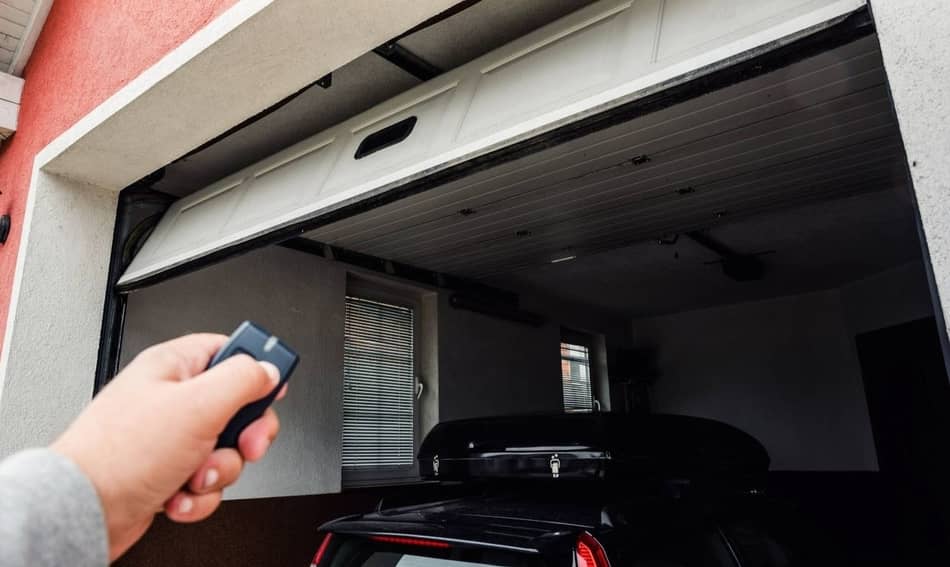
Garage door openers can’t operate when there is a power failure! However, you don’t want to leave your car on the street if you find yourself in this situation. Most garage doors are equipped with unlocking systems that can be used to open the garage door manually.
The manufacturers of electric garage doors have taken this into account, so you can easily use the mechanical unlocking function in situations where there is no electricity inside the house.
However, this must be done from the inside of the garage. If your garage doesn’t have side doors, you’ll need an additional unlocking option.
If you want to know more about these devices, be sure to read The Pros and Cons Of Garage Door Opener.
Garage Door Opener Battery Backup System

Did you know that some garage door opener models come with an additional battery backup system (UPS)? This is nothing new and has been on the market for some time. Therefore, if you don’t have electricity in your home, don’t worry because the battery backup can be used in situations like this.
However, when it comes to battery backups, remember that you need to maintain them, which means you need to charge them about once a month.
If you want additional security in emergency cases, we recommend getting a second battery. Another great option is by using solar panels on your roof. While this will cost you extra, this investment will pay off.
Note! Before you decide to buy a battery backup for your garage door opener, be sure to see if its suitable with your existing system.
How Does Garage Door Opener Work?
The garage door opener uses a coded signal from the transmitter to the receiver. When the transmitter receives the signal, it triggers the motor to open the doors. Frequencies that are used for this are usually 310, 315, or 390 MHz.
However, garage door openers also have a security system to ensure that burglars do not intercept the signal and use it to open your garage when you are not at home.
Modern garage door systems come with roll or change code that changes the signal every time you use it by the transmitter. These codes are then stored in a database that only the sender and recipient can access.
Garage Door Motor Power
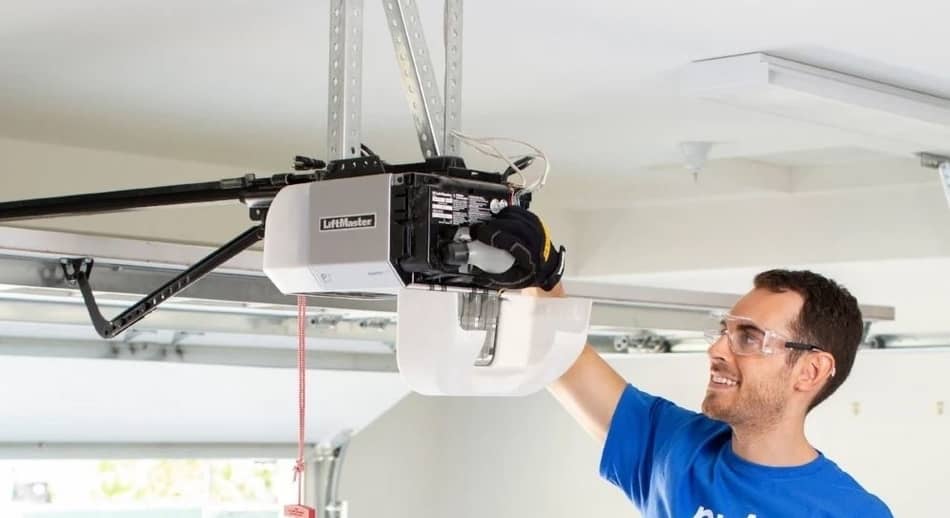
When it comes to garage door openers, it’s very important to choose the one that can handle the applied force required to open and close the door. Therefore, motor power is an important factor that you need to consider.
If you choose the weak motor, it will run at the limit of its capabilities and can break down very quickly, and at the same time, you reduce its lifespan.
Motor Strength Ratings
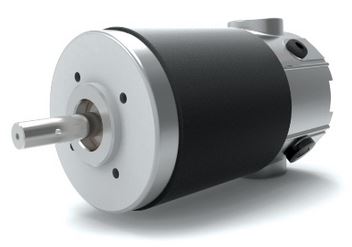
Garage door motor strength indicates how much weight it can lift. Typically, most garage door opener models use AC motors. Their current rating is .5 to .75 horsepower. Another type of motor that you can find in garage door openers is a DC motor. The great thing about them is they are quiet, and the door opening speed can be adjusted.
For that reason, its hard to compare these two types of motors and their strength because they’re different. Remember that AC motors are rated in horsepower (HP), while DC motors are rated in newton-meters (N-m).
How Much Watts Does Garage Door Opener Use?
Typically, most garage door openers consume between 350 to 600 Watts, while the average is about 500 watts. The power that is required is around 4 amps. We can get that by using an easy calculation: 500W/120V = 4.17 Amps.
However, as technology is getting better, newer models consume less energy. Today, you can find garage door openers that use between ¼ to ½ HP per pull. Also, keep in mind that they are used a couple of minutes per day, so you should not expect high energy consumption.
Pros and Cons of Garage Door Opener
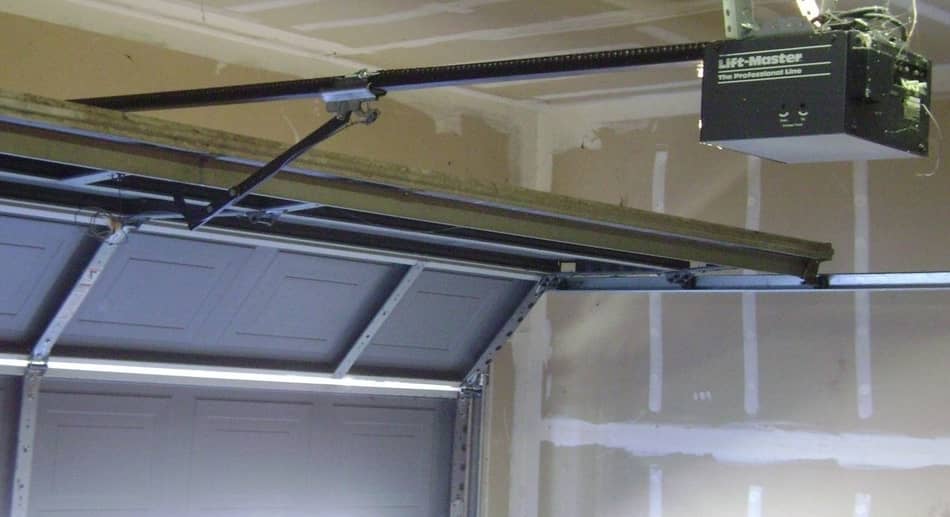
Pros of Garage Door Openers
The first advantage that we must mention is their ease of use! You don’t need to leave the car to park your car in the garage, which can be a great benefit if the outside is raining. Another great thing is that you can connect your garage doors to your home automation system.
Cons of Garage Door Openers
This process requires installation, which can be expensive and complex. Another is regular maintenance, which is not cheap. Also, we must not forget that garage doors require electricity to operate, and without it, you will not be able to use the garage door opener.
FAQ: People Also Ask
What Voltage Is Used On Garage Door Opener?
Garage door openers that are manufactured for use in the United States and Canada operate at 120V AC power, at 60Hz line power. In other countries like Europe, you’ll find that you’ll need 220V at 50Hz to run them.
Do Garage Door Openers Require Electricity To Work?
The garage door opener needs electricity to operate. However, you can open them manually if there is no electricity, and you can also use battery backup as a solution. Either way, you don’t need to worry if you run out of electricity.
What Type of Signal do Garage Door Openers Use?
Every garage door opener comes with a receiver that uses some radio signal. Most garage door openers work on frequencies ranging from 300MHz to 390MHz. When you use your remote control, it sends a signal to the opener box, and it triggers it. The most common garage door opener frequencies are 300MHz, 310MHz, and 390MHz.
Final Thoughts
More and more people worldwide are opting to install electronic garage door openers. They are very practical, and for this reason, their application is increasing. But as they require electricity to work, some wonder how much it will cost them.
This article explained that they would hardly affect your energy bill, and you do not need to worry. I hope we have helped you, so feel free to contact us if you have any additional questions about this topic.
